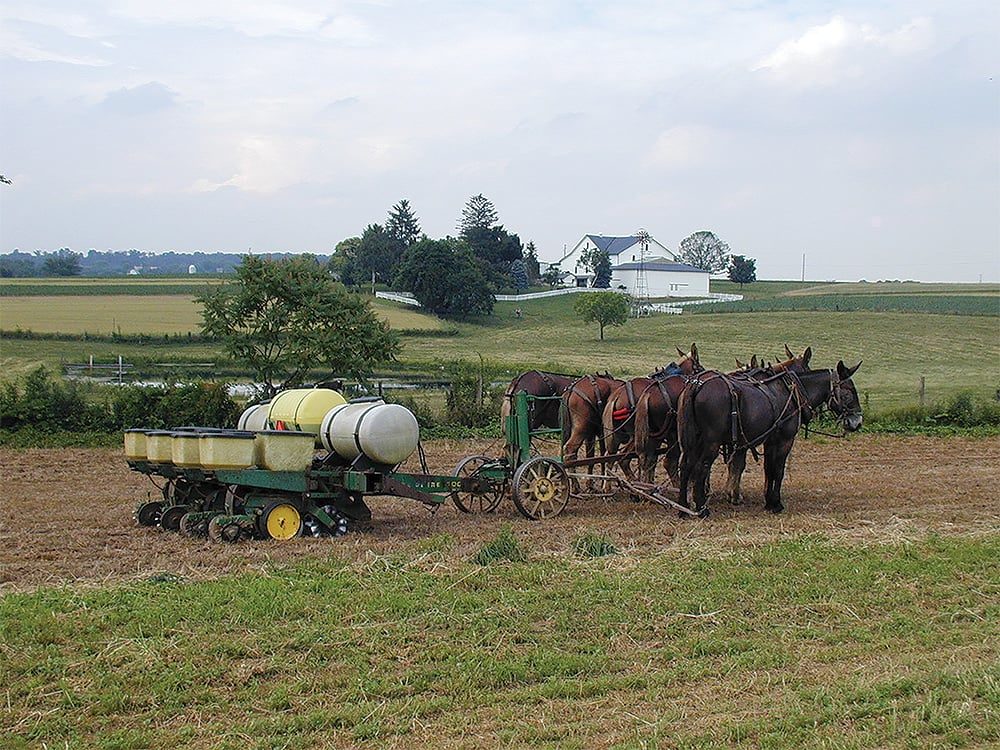No-Till Farmer
Get full access NOW to the most comprehensive, powerful and easy-to-use online resource for no-tillage practices. Just one good idea will pay for your subscription hundreds of times over.

I think readers will find our experiences with no-till to be equally foreign and familiar. Foreign in the fact that on our family farm, the horsepower that runs our field operations comes from actual draft horses. Similar in that we’ve gained many benefits from making the move to no-till.
Our farms, and our business, Pequea (pronounced “peck-way”) Planters, are in the thriving agricultural and Amish farming region of Lancaster County, Pa. My wife, Barbie, and I have five sons and four daughters. Three of my sons are farmers. The other two, Daniel and Omar, partner with me on Pequea Planters. The push to no-till and, to some degree the creation of the custom planter building business, was a result of the ever-increasing value of farm ground in our area.
Even back in the 1970s and ’80s, farm ground had become so expensive that we saw a need to increase return per acre. Double cropping was one of the ways we achieved greater returns. On our farms and many others in the area, the new strategy is to take off high moisture forage in the spring, apply manure and immediately plant corn. Our cover crops are used as fall pasture or harvested in fall or spring as high moisture forage. Those covers not harvested in spring are burned down ahead of planting corn.
When we started double cropping, we needed to get in and plow the field right away in May or June to plant the next crop. This presents a…